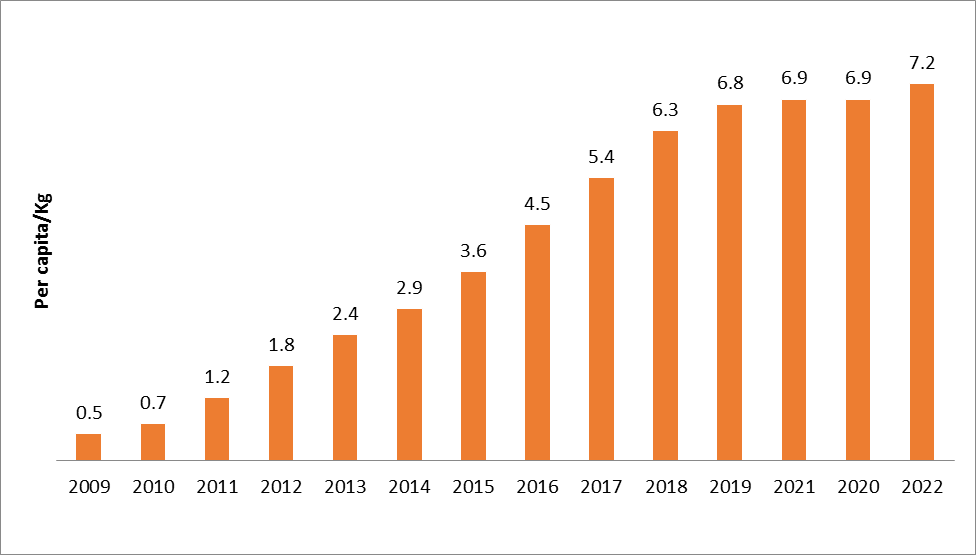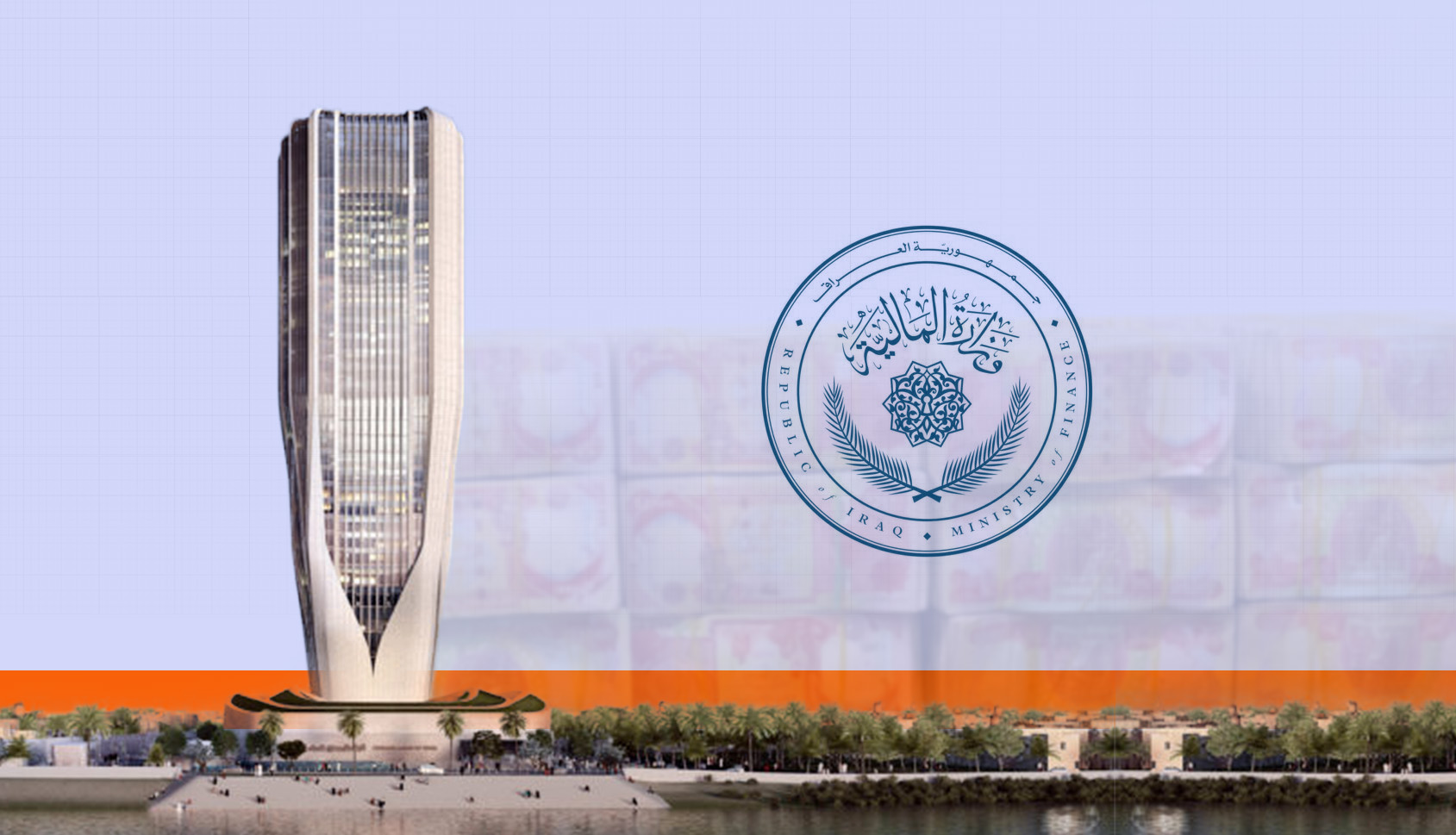Introduction
The ongoing challenge of waste management in Iraq and the Kurdistan Region, with a particular focus on major urban centers like Baghdad and Erbil, presents a significant environmental and climatic concern. This issue is exacerbated by the fact that Iraq, including the Kurdistan Region, is among the upper-middle class income countries. This indicates a swift transition from disposing of daily waste, particularly food and beverage items, to a greater emphasis on non-food materials, notably plastic!
In accordance with a comprehensive report conducted by Japan International Cooperation Agency (Yachiyo Engineering Company) pertaining to waste data analysis in Iraq, with a particular emphasis on both the capital cities and the Basra province, as of 2022, it has been clarified that each individual in Iraq generates an approximate daily waste output of 1.36 kilograms. This figure significantly surpasses the global average waste generation per capita, which stands at 0.74 kilograms. Consequently, the cumulative daily waste collection in Iraq amounts to an alarming 20,000 tons, while the Kurdistan Region contributes an additional 6,900 tons to this considerable waste burden.
According to the World Bank, the global annual waste collection currently amounts to a staggering 2 billion tons, and projections indicate that this figure is poised to surge to 3.4 billion tons by the year 2050, marking a significant increase of 70%, per capita waste generation varies significantly among different countries ranging from 0.11 to 4.54 kilograms. Intriguingly, despite constituting just 16% of the global population, high-income countries are responsible for a disproportionately substantial portion of this waste output, generating 34% or an equivalent of 683 million tons of waste each year.
Salahaddin and Dhi Qar provinces manifest the highest daily per capita waste generation rates, with Salahaddin registering 4.02 kilograms per day. Conversely, Kirkuk and Nineveh provinces demonstrate the lowest rates, documenting a mere 0.82 kilograms per day in Kirkuk.
At the Kurdistan Regional Government level, particularly within Erbil province, the daily per capita waste collection stands at 1.33 kilograms, resulting in a daily accumulation of 1,760 tons and a monthly total of 52,800 tons, as delineated in the report by the Japan International Cooperation Agency. This engenders a monthly expenditure surpassing 2 billion and 300 million dinars.
In preceding years waste disposal losses may have been lower primarily owing to two key factors: The first factor pertains to minimal waste generated, while the second one pertains to the daily waste composition of individuals. However, it is essential to note that both the quantity and composition of waste have undergone significant transformations. For instance, in previous years, the majority of waste comprised organic materials, which readily decomposed. Yet, with the proliferation of plastics, nylon, and inorganic substances in the waste stream, their persistent presence in the soil has become increasingly evident. A notable illustration of these changes is evident in the daily garbage waste generated by individuals, particularly from food delivery companies, considering a single delivery company operating in the Kurdistan Region, with an average of over 19,000 daily orders, out of which approximately 12,000 pertain to Erbil alone. It's worth noting that the majority of these orders necessitate the use of plastic for packaging. If each of these packages contains between 0.5 to 1 kg of waste, the daily accumulation of plastic, nylon, and cardboard waste would range from a minimum of 9.5 tons to a maximum of 19 tons. Such a situation has never been observed among the families in the Kurdistan Region.
In this analysis, we delve into the waste composition in Iraq and the Kurdistan Region, with particular attention to the capital cities and Basra province. Our examination extends beyond the immediate environmental impact of ongoing waste collection to underscore the perils associated with the escalating utilization of plastics and the surging levels of greenhouse gases, which are a staggering 80 times more potent than carbon dioxide. This is steadily rising day by day due to the prevailing waste disposal method.
Municipal Solid Waste Composition in Erbil, Baghdad, and Basra
As per data provided by Japan International Cooperation Agency, the garbage collection figures are as follows: 1,796 tons in 2020, 1,857 tons in 2021, and 1,920 tons in 2022. These cumulative figures project a total of 2,463 tons by the year 2023.
A noteworthy and significant observation lies in the transformation of an individual's daily waste composition, which is intricately tied to both the national income level and individual economic status. In low-income countries, a substantial 60% of waste comprises food, creating a stark contrast. Conversely, high-income countries exhibit a noticeable shift towards increased quantities of plastic and non-food products in their waste streams, as is evident in the waste composition profiles of both the capital cities and Basra province.
Regarding waste composition in Erbil province, data from the report by Yachiyo Engineering Company reveals that food waste alone constitutes 31% of the total, while all categories of plastic materials account for 27.7%. It's important to note that the daily waste collection and disposal practices in Erbil lack a scientific approach, as illustrated in Graph 1, depicting the composition of garbage and waste in Erbil.
At present, Erbil province lacks recycling facilities. The primary hub for waste collection and disposal in Erbil is Kani Qirzhala, where exceeds 1,700 tons daily, in 37-hectare area 75% has been utilized and leaving just 25% for future use. In alignment with the findings of the Japan International Cooperation Agency, of the 23 points required for a waste disposal site, only 7 are available and there are no steps to open a new site.
Kani Qirzhala, situated a mere 15 kilometers from the center of Erbil, has accrued a significant landfill height of 35 meters over the course of the past 17 years, equivalent to an annual intake of 328,500 tons of waste. Indeed, an on-site visit is necessary to comprehend the impending ecological catastrophe. In recent years, protracted gas emissions have persisted for several days, culminating in early August of the current year when a noxious smoke shrouded the skies, accompanied by a pervasive odor stemming from a landfill fire.
As per the report of the Japan International Cooperation Agency, Baghdad recorded a daily waste and garbage accumulation of 10,427 tons in the year 2020, equating to 1.22 kilograms per capita for that year. Projections indicate that this figure is anticipated to surge to 14,889 tons per day in 2030. This substantial increase is marked by a noteworthy composition shift, with approximately 80% of the waste comprising food waste, plastics, paper, and cardboard. Graph 2 underscores this transformation, revealing that 42% of the waste is constituted by organic materials (primarily food), 21% by paper and cardboard, and an additional 21% by plastics.
In Basra Province, home to a population of 1,510,000, daily waste generation has seen a notable increase. In 2021, it amounted to 1,734 tons, rising to 1,793 tons in 2022, with projections anticipating it to reach 2,303 tons by the year 2030. When considering waste composition within Basra province, a notable 54.8% comprises food waste, while 25.2% is constituted by plastics. This stands in stark contrast to Erbil province's waste composition.
Graphic 1: Solid Waste Composition in Baghdad, Basra, and Erbil

Source: Japan International Cooperation Agency (Yachiyo Engineering Company) Report 2022
Escalating Plastic Usage and Its Implications
The importation of plastics has witnessed a remarkable surge, escalating by 612% or an annual average of 24.4% over the last decade, surging from 40,000 tons to a substantial 285,000 tons.
In 2022, Iraq was the third-largest plastic importer, trailing only behind the UAE and Saudi Arabia, with a total import volume of 285,000 tons. Jordan secures the fourth position with 263,000 tons, followed by Oman at 202,000 tons, Lebanon with 197,000 tons, Kuwait at 105,000 tons, and Qatar with 93,000 tons.
Based on data collected from a delivery company operating in the Kurdistan Region and Baghdad, an average of approximately 37,000 daily orders are placed, primarily encompassing food and packaging. If we conservatively estimate each order to generate between 0.5 to 1 kg of waste, this translates to a minimum annual waste production of 6,715 tons and a maximum of 13,431 tons of plastic, nylon, and cardboard waste. Consequently, the usage trend has displayed a year-on-year escalation, as depicted in Graph 2.
Graph 2: Plastic Imports into Iraq (2011-2022)

Source: EUROMAP, January 2022 | Graph: Fairtrade
In the realm of personal consumption, plastic usage has shown a steady annual growth rate of 22.8%, surging from 0.5 kg per capita in 2009 to 7.2 kg in 2022. Projections indicate that this figure is poised to ascend further, reaching 9 kg by 2026.
Graph 3: Per Capita Plastic Distribution in Iraq (2009-2022)
Source: EUROMAP, January 2022 | Graph: Fairtrade
The surge in plastic consumption in Iraq can be attributed primarily to food packaging, constituting 59% of the total plastic usage. This is followed by 21% in the construction sector, 3% each for electrical and electronics, and automotive industries, with the remaining 14% allocated to various other sectors.
Based on OEC data, Iraq's plastic and plastic product imports in 2021 amounted to $263 million, whereas its exports only reached $358,000. China held the lion's share, contributing to 70.3% of Iraq's plastic imports, totaling $185 million. Turkey followed with 16.7% at $43.8 million, the UAE with 3.23% at $8.48 million, and Jordan with 2.14% totaling $6.33 million.
Persistent Consequences of Garbage and Waste Collection
Kani Qirzhala, Erbil, bears the burden of more than 2,000 tons of garbage and waste being deposited daily. What's even more alarming is that between 2003 and August 2022, a staggering 300 acres of the landfill have been completely consumed! Visual evidence is available in the images below.



Source: Board of Environmental Protection and Improvement of Erbil, September 21, 2023
The mounting garbage levels in Kani Qirzhala have compelled the government to annually excavate wells, aiming to mitigate the potential hazards of noxious odors, unexpected fires, and toxic emissions in Erbil's airspace. In the year 2020 alone, a total of 40 wells, each ranging from 8 to 15 meters in depth, were dug for this purpose.
The ongoing operation of the existing landfill poses a significant threat, releasing two potent greenhouse gases and carbon dioxide. These gases are primary contributors to global warming and climate change. Garbage, notably, ranks among the top three sources of greenhouse gas emissions, trailing only agriculture and the oil and gas industry. It accounts for a substantial 20% of these emissions and is approximately 80% more environmentally detrimental than carbon dioxide. This substantial contribution to climate change has been linked to a 0.5-degree Celsius increase in Earth's temperature.
A study conducted by Lappeenranta-Lahti University of Technology (LUT) in Finland reveals a remarkable reduction in carbon dioxide emissions in Lappeenranta over a decade, from 2009 to 2019 emissions plummeted from 945 kg to a mere 141 kg, solely by implementing changes in waste collection method to recycling plant.
While both Erbil and Baghdad currently boast impressive daily garbage collection rates, with 98% in Erbil and 85% to 90% in Baghdad respectively, but the absence of effective recycling practices exacerbates environmental risks. Furthermore, as populations continue to burgeon, the hazards associated with this collection method are on the rise.
Of the three Iraqi provinces, Erbil is projected to have the highest per capita garbage generation in 2022, amounting to 1.33 kilograms per day. This figure is expected to increase to 1.45 kilograms by the year 2030, surpassing both Baghdad and Basra by that time.
Table 1: Projections for Waste and Garbage in Baghdad, Basra, and Erbil Provinces in 2030
Source: Japan International Cooperation Agency (Yachiyo Engineering Company) Report 2022
Conclusion
Unlike European nations, Iraq and the Kurdistan Region are currently grappling with a growing waste problem. The outlook for establishing recycling facilities and implementing innovative waste collection methods remains uncertain. In stark contrast, the European Union made a decisive move almost a decade ago by committing to phase out landfill disposal of waste in all member states. Their ambitious goal is to achieve a 70% rate of waste reuse and recycling through innovative approaches. As of 2021, all EU member states had successfully achieved a 50% recycling rate, with Germany leading the way at an impressive 71.1% recycling rate.
Indeed, the hazards associated with this method of garbage collection are mounting within our urban environments. Furthermore, the disposal sites themselves are bearing the brunt of this issue, primarily due to the escalating presence of plastic materials within the waste stream. To provide some context, these courier companies and delivery agents in the Kurdistan Region are presently processing an average daily input of 15 tons of waste.
Additionally, under the current waste disposal method, every ton of garbage contributes to the release of 50 kilograms of greenhouse gases, each kilogram is equivalent to approximately 84 kilograms of carbon dioxide (CO2). This alarming statistic implies that a staggering 29,000 tons of carbon dioxide are emitted into the atmosphere daily in the Kurdistan Region due to waste and debris!
In conclusion, a straightforward approach to garbage collection in the Kurdistan Region and Iraq, particularly within urban centers, could involve the separation of waste collection particularly in the new housing projects. As an illustrative example, consider a residential project comprising 1,160 units, where the current practice aggregates more than 5 tons of garbage and waste daily. If these materials were collected separately, it is plausible that over half of them could be repurposed or reused. While it's true that recycling facilities may not yet exist, this method would still allow for the direct utilization of valuable materials such as cardboard, paper, and plastics.
Sources
Ministry of construction and housing and municipalities and public works regional ministry of municipalities and tourism in Kurdistan mayoralty of Baghdad, Basrah city and Erbil city DATA COLLECTION STUDY ON SOLID WASTE MANAGEMENT IN IRAQ (no date) Jica.go.jp. Available at:
https://openjicareport.jica.go.jp/pdf/12367256.pdf (Accessed: September 20, 2023).
The World. Bridging the Gap in Solid Waste Management Governance Requirements for Results. Washington DC: The World Bank Group, 2021.








